SLATE AND STONE ROOFS IN ENGLAND


10/11/12
The vernacular slate and stone roofs of England have used a very wide variety of fissile or cleavable rocks ranging in age from Cambrian to Cretaceous. The physical and visual characteristics of these stones and the skill and ingenuity of roof slaters in adapting them to a range of weather conditions have made a major contribution to England’s built heritage and regional distinctiveness.
A review of these slates and stones was published by the English Stone Forum and can be downloaded free from the link below or the complete publication England’s Heritage in Stone can be ordered from the National Stone Centre Porter Lane, Middleton by Wirksworth, Derbyshire DE4 4LS 01629 824 833 price £8.00 plus postage.
These are the slates and stone slates. They are arranged by geological age with the oldest at the bottom.

Cambrian

Sandstone, limestone and slate sources





Sandstones
In the main, sandstones have been used for roofing in the more westerly counties of England from Bristol northwards. In the southeast, Horsham stone is an important source.
Limestones
Jurassic age limestones are a major source of stone-slates to the east of the sandstone sources. Permian age Magnesian limestone has also been used in the past.
Slates
Roofing slates used in England have predominantly been sourced from the Cambrian, Ordovician, Silurian and Devonian age rocks in the western parts of England and Wales. One other important source was at Swithland in Leicestershire.
Maps adapted from Cameron et al. Directory of Mines and Quarries, 2002. 6th Edition. British Geological Survey, HMSO, London and reproduced with permission

Late Jurassic and Cretaceous


Purbeck limestone Dorset
Horsham stone East Sussex

Jurassic: Inferior Oolite and Great Oolite groups


Collyweston ‘slates’ limestone
Stonesfield ‘slates’ limestone Lincolnshire
Early Jurassic: Lias group


Red Penrith Sandstone
Ham Hill stone Somerset

Permian and Triassic


Magnesian limestone (Cadby Formation) Nottinghamshire

Permian red sandstone Dumfriesshire
Ordovician

Swithland slate Leicestershire
Ingleton ‘slate’ North Yorkshire

Welsh Cambrian slates Gwynedd

Ordovician Welsh slate

Westmorland Green slate

South Shropshire sandstone
Devonian

Silurian

Carboniferous

Old Red Sandstone


Cornish random slates on the right are often inappropriately replaced with tally slates on the left
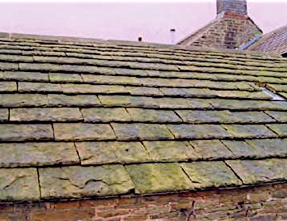
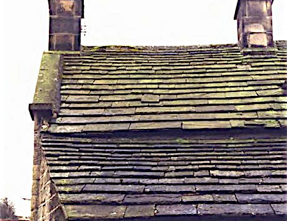
Carboniferous sandstones are usually very flat (left) but some show ripple bedding (right) Derbyshire
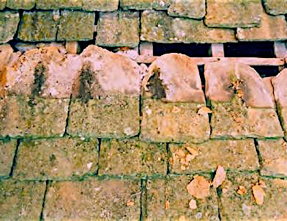
Carboniferous Pennant sandstone South Wales
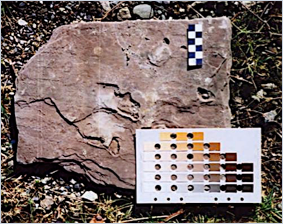
Herefordshire sandstone
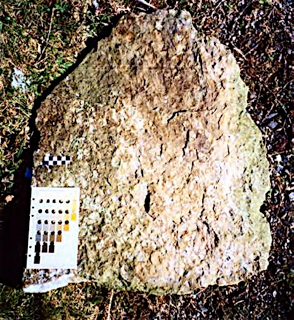
Burlington Blue slate Cumbria
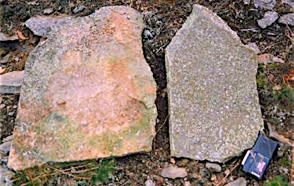
Altered Hope Shale near Bishop’s Castle Shropshire
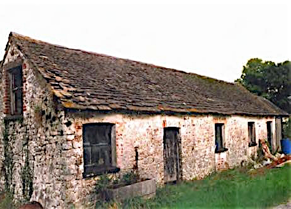
Harnage (Hoar Edge) ‘slate’ Shropshire
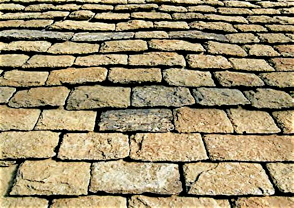
Harnage slate
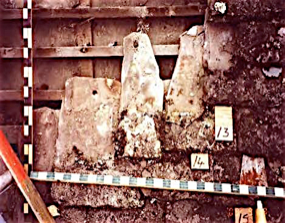
Herefordshire sandstone on Dore Abbey
The Tilestones - Llandybi to Downton Abbey Shropshire
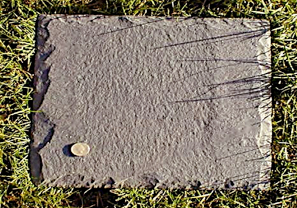
The geology is the vernacular. The dialect is the way the slater uses the stone.
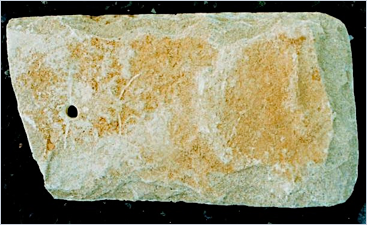
Middle Jurassic:
Forest Marble Dorset, Somerset, Gloucestershire, Oxfordshire

